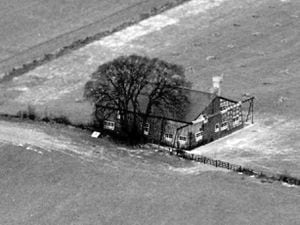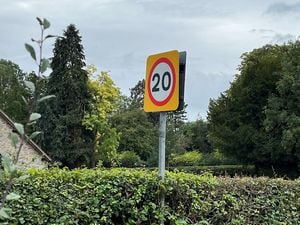New book explore war's deadly game of hide and seek
With the artist's eye, and the inventiveness and trickery of the illusionist, it is a branch of military craft which aims to achieve the feat of a magician – to make things disappear.

The war in Ukraine underlines that even with today's new technologies, military camouflage is as relevant as it ever was.
And now a new book by Shropshire military historian Bernard Lowry goes into the subject in depth, exploring the deadly game of hide and seek through which concealment can profoundly affect military operations and chances of survival.
"Military Camouflage" is published by Amberley and is a 96-page paperback in colour, with 100 illustrations.

Examples of camouflaged structures from the last war remain across our region, such as hangars at Cosford airfield with turfed roofs to make them more difficult to see from the air.
Sometimes it was decoys which were used to confuse the enemy in an attempt to fool raiders into attacking a dummy target – such as a cunning scheme used to give some protection to the Boulton Paul aircraft factory at Wolverhampton.
Misdirection, too, like the pill box fortification on the North Wales coast which was made to look like a refreshment kiosk, complete with a sign for "Teas and Ices."
Bernard, from Market Drayton, said: "My interest in the subject began as a child, making model aircraft, later tanks. I was intrigued to know how, originally, these were camouflaged.

"Gradually I acquired an extensive library on the subject, both in the English language and also foreign sources, both books and magazines.
"Then I became interested in uniforms, and how camouflage patterns developed. An interest in fortifications led me to photograph the way modern works were camouflaged, this leading me abroad where I also visited military museums. Of course I built up a large collection of images from my travels.

"And what about this area? Well, many airfields were constructed just before or during World War Two and the threat of German bombing raids led these to be given concealment, firstly by building the sloping Lamella hangars that can be seen at such airfields as Cosford or Shawbury, their roofs turfed for better concealment.
"Other hangars were given disruptive green stripes over their brick walls. Pillboxes had many different schemes, a popular one being the use of nets suspended from their green-painted walls, as at Cressage Bridge.

"To fool German bombers a decoy factory was built some distance from the Boulton Paul factory near Wolverhampton. I cannot say if it fooled the Luftwaffe, but other decoys around the country did.
"The concept of camouflage has not gone away. The Ukrainians and Russians wear camouflage clothing, and guns are carefully hidden in woodland or underneath nets. You could say that with the advent of drones the need for careful camouflage is even greater in war.''

During the Second World War the art and science of camouflage expanded to an unprecedented scale, and among those who worked for the Civil Defence Camouflage Establishment at Leamington Spa were artists such as Julian Trevelyan and Colin Moss.
With their understanding of scale, colour, and tone, artists and architects had a valuable contribution to make with the aim to blend structures into their surroundings or deceive the eye. While it was difficult to conceal some sites, simple measures such as the use of netting or vegetation and false structures could hide the shadows from factories.
At RAF Cosford false hedges were painted on the airfield, while cooling towers at power stations were given elaborate paint schemes.

Surrealist artist Roland Penrose, a Quaker and a pacifist, was among those who put his expertise at the service of his country.
"Military Camouflage" costs £15.99 and is also available in Kindle, Kobo, and iBook formats.






